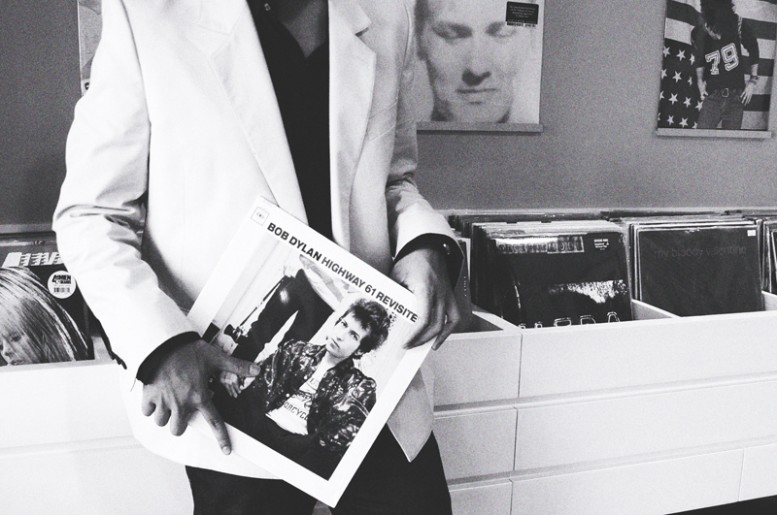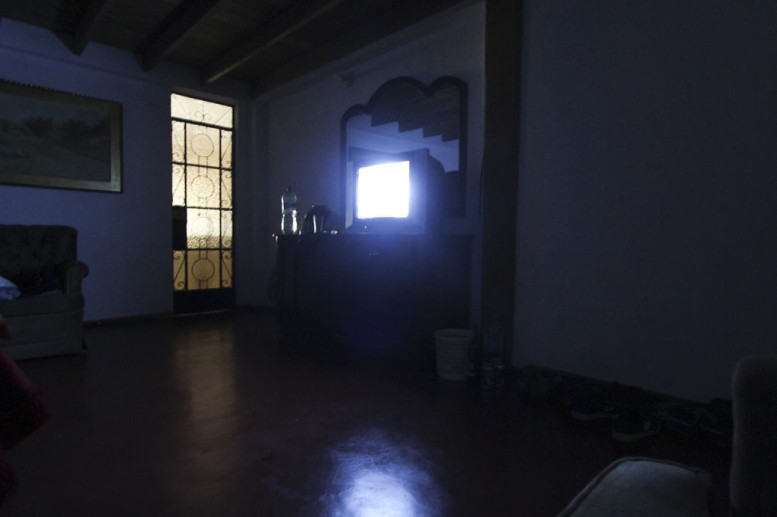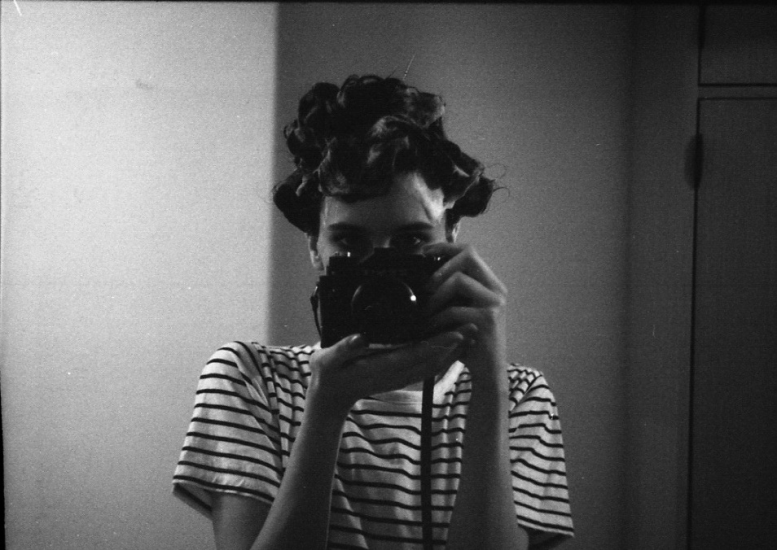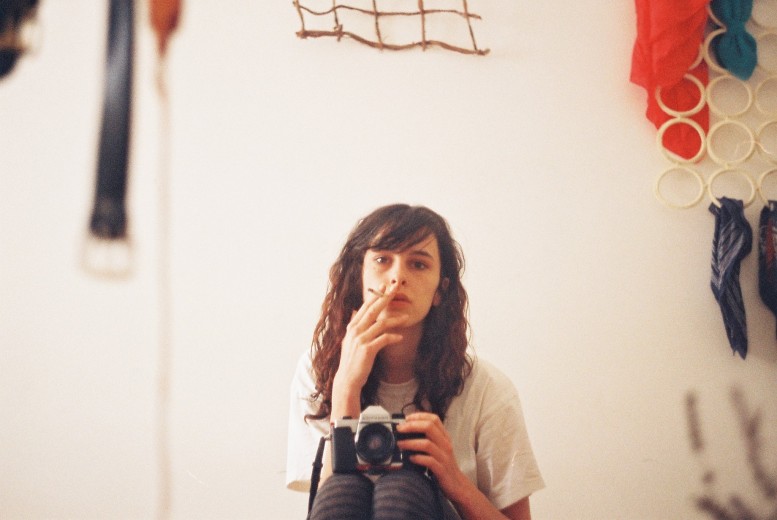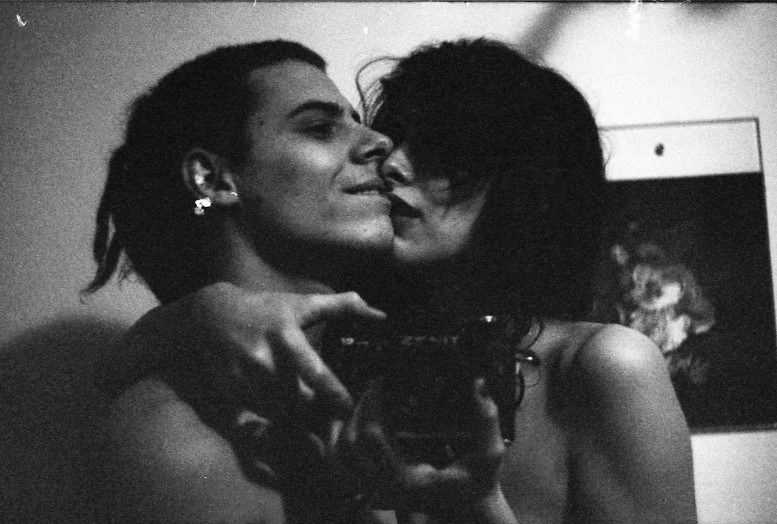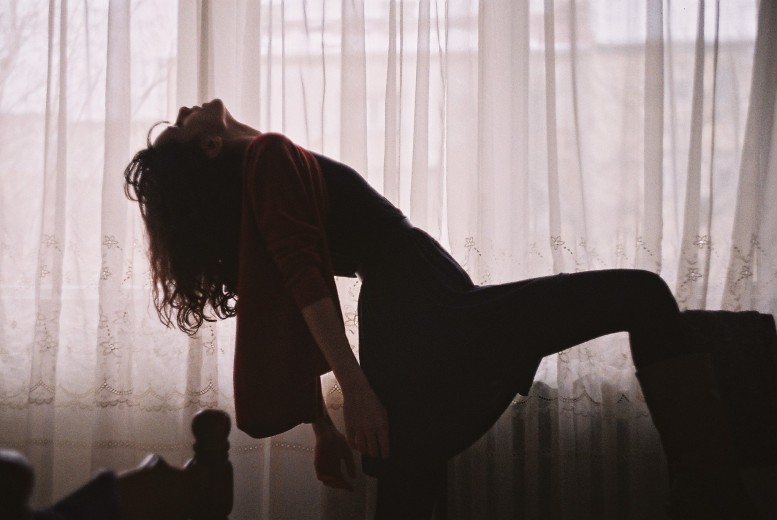You could say that the photographer Henri Cartier Bresson was a punk, because he didn't give a fuck. The punk ethos is all about not giving a fuck. Its not all about breaking the law per se, and its not all about not giving a fuck, but its the notion of changing the order of things. Its about upholding the sanctity of the holy shades of grey. Henri Cartier Bresson was a punk, because he saw the world in a passionately different way. His photographs are vibrant, stark, and violent depictions of his time told from a voice of artistic and spiritual dissension. If you look up the word punk in the dictionary you'll find a number of definitions: prostitute, novice, beginner, young man, petty gangster, hoodlum, ruffian and so on. A punk is a soul on the edge – on the precipice of an infinite, metaphysical abyss. Ben Pobjoy could be any of those things or none of those things, but the ethos of punk is very much alive in his photography. Pobjoy, a photographer from Montreal, is a fervent documentarian of the human experience and his images are an attestation to his seemingly intense curiosity. From his portfolio of photographic essays, a zine, called The Tourist, the current issue of which featuring over 40 pages of exclusive photographs of Justin Bieber, and a digital adaptation, called The War of Spoils, of a journal kept from his raucous days in a band which includes polaroids of drug induced debauchery, destroyed hotel rooms, and lots of nudity – it is plainly clear that Pobjoy is practicing dissent on the same precipice. His photographs tell the common story of our downfall, our vulnerability, our vice, and our eventual hope with the piercing and blinding vision of some kind of silver lining. But most of all – like all prophecies of the great punks before us – Pobjoy's photographs are a telling reminder of the true circumference of the iceberg that will destroy us all. Read interview and see more photos after the jump.
Can you remember the first image you ever took? Truthfully, I can't remember the first image I ever took- only because I grew up in a home where my Father practiced photography as a hobby so there were always 35mm SLRs sitting around the house. While I don't remember the first image I ever took, I do fondly remember being real young- like being 5 years old- and going on walks in a local marsh with my Father and him occasionally passing his camera to me to let me fire off a few frames. Despite being real young, I was fascinated- that with a camera- you could venture off into the world and document it however you wanted to.
Your style seems much more photo-documentary than tableau vivant or studio, what do you think led you to to a more candid type of photography? When my Father was in his early 20s he was a paratrooper in Great Britain's Royal Air Force. He served in Northern Ireland during the Troubles and carried a SLR without permission. When he was patrolling- and he wasn't under attack- he would photograph the patrols, his peers, arms dumps, arrests and beyond. While he never boasted about the images he shot (he was actually very private about them), they were in an envelope in our home, and I'd look through them every now and then when I was a kid. I liked that that they were filmic, had a narrative and that I could ask him about the people, places and things within the images. While I was too young to grasp what I was looking at, I was obviously looking at documentary photography and it made a deep impression on me. Combined with my Father's subscriptions to National Geographic and Life, I just grew up loosing myself in documentary photography and photo essays. I just loved how transportive they were in that they could take me to worlds beyond my immediate world.
A few years later, my Mum worked as a set stylist in a production house where they created 'sets' for magazine shoots. Every now and then she'd bring me along and I'd observe the whole process of sets being styled, lighting systems being set up and models being directed then photographed. I remember thinking how orchestrated it was, and basically well, how phoney it was. It was such a departure from documentary photography which was so much more off-the-cuff and natural.
Hilariously, I started doing 'hand modeling' at the production house where I would be photographed holding game pieces for board game packaging. I remember being like 9 years old and having to hold a chess piece above a board for like 30 minutes and my arm started to tire and the photographer kept barking at me to keep my hand raised and steady. It was so unenjoyable and artificial that that sort of 'production-heavy' photography made such a poor impression on me- something I've never been able to get over.
Who are some of your biggest inspirations or influences? When I was a young teen, I got into punk and loved zines like HeartattaCk and Maximumrocknroll because they documented the scene I was a part of. The energy inherent within the live music photography intrigued me so I really liked the work of Glen E. Friedman, Gordon Ball and Ryan Russell. However, it didn't really satisfy my appreciation for visual storytelling as most of the images were- despite being fabulous- just these 'one off' live images or portraits, and I didn't have much of a personal interest in shooting music photography. I then started to get into the work of documentary photographers like Robert Frank, Martin Parr, James Nachtwey and all the Magnum photographers. Thereafter, my appreciation widened to encompass fine art photographers like Nan Goldin, Larry Clark and others who utilized reality as the basis within their works.
However, my appreciation these days has widened to encompass many fashion photographers since I was gifted with a medium format camera last year, and began to experiment with studio photography (just to expand my skills). Because of this, I started to look at the work of Richard Avedon, Helmut Newton, David Bailey and others of that ilk in a whole different light. In one way or another, I've cherry picked something from all of the above. Basically, I aspire to shoot documentary photographs that hopefully possess a degree of style that is commonly associated with fashion photography. I just like honest images that are stylized, and by that I mean possess a 'look' that people would can associate with the photographer that shot them.
You are just about to release the second issue of your zine called The Tourist which features exclusive photos of Justin Bieber. It isn't so much about Justin Beiber as it is a treatise on fandom and child fame, right? Can you tell me how The Tourist zine came about and shed a little more light on the current issue? By day, I'm a Creative Director at a creative services company I co-founded with my best friend Shawn Butchart who is also a Creative Director. We have a sister office in New York City that is run by Jamie-James Medina who is himself a Creative Director, Photographer and a Director. Medina is a photographer for The Observer in the UK and often- typically over late night dinners after working on projects together- we'd discuss photography. He'd often speak about the state of photography, and specifically how long form photo essays were increasingly being given less real-estate in print publications due to the rise of the internet and the fall of print publications. Unfortunately, photo essays mostly now exist as slide shows online and it's just such a terrible, cluttered format and experience (i.e. you're trying to look at an essay and it's surrounded by blinking ad banners or intrusive ad vokens). So, Medina was the real impetus behind launching the Tourist as a collaborative interoffice publishing project where we'd essentially put one photographer on the road with one musical act and have the work contextualized by an intro by a cultural luminary. While we could've released each issue as a coffee table book- as the content is of that quality- we opted to release it in a zine format so it would be affordable to everyone and just really unique overall.
The Teen Issue - which features images of Justin Bieber on tour taken by Alex Sturrock - is a really different look at Bieber. Sturrock's images are very frank - capturing things as they are. That's not to say that the images are unflattering- because they definitely aren't- it's just that they show how intense Bieber's touring life is, and how fanatic his fans are. While the issue revolves around Bieber- to me- it's more about the relationship between child stardom and the general public's intense mania of, and fascination with, celebrity.
War of the Spoils is a really interesting site. What was the impetus behind it? Last year I turned 30 and randomly revisited all these journals I maintained in my teenage years where I'd shoot a polaroid, write an anecdote and glue it into a book. Between August 1998 and January 2007 I ended up creating 9 volumes of the journals that housed over 2000 polaroids. For years I ignored them- they were just so stupid in terms of the images and the anecdotes- and I was kind of embarrassed by them. However, looking at them as an adult I realized that the journals are unique documentation of youth and all the insanity and chaos that goes with it. I decided to start a blog called War of Spoils and post a polaroid along with its corresponding anecdote each day- mainly as a way to share the old photos with friends that I grew up with (but who are now strewn all over the world). However, the reaction has been really crazy- people beyond my small group of friends have gotten a real kick out of War of Spoils and publications are really interested in writing about the blog. In a universal way, I guess we all do stupid stuff as kids and people seem to really relate to the content.
You seem to be using the internet to your fullest artistic advantage in order to get your work out there. What are some of your thoughts on art, more specifically photography, in the digital age? I think the internet can be a fantastic platform for sharing work and accessing an audience that you could never reach with an editorial in a regional publication or with an art exhibition that takes place in a specific city during a defined time frame. The internet is basically this living, breathing repository of content that is accessible 24/7 wherever an internet connection exists anywhere in the world, and I find that really fascinating. If you're a photographer, why wouldn't you take advantage of it? I just think that the internet is an incredibly powerful tool for enlarging your audience, and this audience- at least in my experience- is loyal and takes interest in my other projects so it increases my value to publishers and curators so it's basically a win-win situation for everyone. I get to make more work, my audience gets to see more of my work and publishers and curators get to make increased money off of my work, and the internet is basically the 'driver' of this entire content 'food chain' scenario.
What's next? I'm currently at work on both The Apostate and Father, Son and the Holy Ghost which are two, multi-year spanning documentary photo essays. However- and this if the first time I've mentioned it publicly- but I'm also working on a new, currently untitled exhibition slated for 2013 that is a collaboration with artist and sign painterDave Arnold. Working under the alias Black Lung, Arnold and I are collaborating on a new body of work where I'm shooting high end, B&W medium format portraits of men and women in states of undress and Arnold is painting over the 35" x 35" prints. The 'process concept' is that I typically approach photography in a really raw, unplanned way whereas Arnold approaches his painting in a very planned, orderly way. For this collaborative project, we're both using our traditional tools (I'm working with a camera and Arnold is working with paint) but we're swapping approaches- as in I'm shooting fine, well-lit fashion influenced portraits and Arnold will be painting on them with mixed media in a very raw way. It's in its early phase right now but the initial works are pretty outrageous in that they're this highly visual bombardment. Dave Arnold and I are really excited about the new body of work, and we cannot wait to share it with the world as it's vastly different yet totally connected to the work we've previously made.
Visit Ben Pobjoy's portfolio, stay up to date with War of the Spoils, and stay tuned The Tourist zine.
Text by OLIVER MAXWELL KUPPER for PAS UN AUTRE










